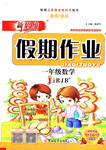题目内容
Agricultural experts met in Ethiopia last week to discuss ways to help sub-Saharan Africa become a major producer of wheat. The area traditionally produced little wheat, while North Africa was the grain basket.
Wheat production fell sharply in sub-Saharan countries during the 1980s. In the 1960s, attempts were made to grow wheat in sub-Saharan Africa, including South Africa and Zimbabwe. But those countries found it was less costly to import wheat from Europe and the United States. Another problem is that Africa's wheat farms were often far from population centers. There also were transportation issues. And some lowlands were not a good place to grow wheat.
Hans Joachim Braun,one of the experts, says now is a good time to increase wheat production. In the last four years we have seen three major price hikes, where the wheat price and other staple process (主食加工)exploded. And that puts a big, big bill on countries which are depending on wheat imports, and Africa is the biggest wheat importer.
He also says demand for wheat in sub-Saharan Africa is growing faster than for any other crop. With higher income people would like to have more diversified(多样化)food. But that is possible not the most important one. The most important one is that there is a tremendous migration(移民)of in particular male labor to the cities. And wheat products are convenient food because you can easily buy it. It's easy to process and you also can store it for a few days, which is different from some of the maize and rice products.
There are three possible challenges for growing more wheat in Africa: climate change, disease and pests, like insects. Mr. Braun says rising temperatures should not have a major effect on wheat. In fact, he says, it could help wheat grow in areas with high rainfall totals. As for fighting disease and pests, experts suggest growing more resistant crops. In addition, railroads and roads would have to be improved so large amounts of wheat could be moved to large markets
- 1.
What does the word "hikes" in Paragraph 3 probably refer to?
- A.big changes
- B.large increases
- C.long trips
- D.big bills
- A.
- 2.
Wheat price exploding indicates_____
- A.sub-Saharan countries need to increase wheat production badly
- B.sub-Saharan countries have to issue more money
- C.sub-Saharan countries should grow more Corn
- D.importing much wheat is urgent
- A.
- 3.
Why is there a higher demand for wheat in sub-Saharan Africa?
- A.Because the number ofhungry people there is increasing
- B.Because higher income people have the diversified need of food
- C.Because male labor are crowding into the cities
- D.Because the wheat price is lower
- A.
- 4.
According to Mr. Braun the main challenges for growing more wheat in Africa are_____
- A.climate change and disease
- B.resistant crops and climate change
- C.rising temperatures and disease and pests
- D.disease and pests and inconvenient transportation
- A.
BACD
试题分析:农业专家上一周在埃塞尔比亚会面讨论帮助次撒哈拉沙漠地区的非洲成为一个小麦主产区。这一地区传统上生产的小麦很少而北非曾经是谷类粮仓。次撒哈拉国家的小麦产量锐减。一方面从欧洲和美国进口小麦费用更少;另一方面非洲的农场离人口中心区很远,运输是个问题,还有一些低洼地区不宜种小麦。现在是时候增加小麦生产了。在四年的时间里小麦价格就暴涨了三次。进口小麦费用就会大大增加。到了自己生产小麦的时候了。
1.词意猜测题。hikes是熟词新意,原意是爬山,在这里是价格上的“爬山“,结合后面的where the wheat price and other staple process (主食加工)exploded.(小麦价格和其他主食加工的暴涨。)判断,选B。
2.推理判断题。文章第二段的大意:次撒哈拉国家的小麦产量锐减。一方面从欧洲和美国进口小麦费用更少;另一方面非洲的农场离人口中心区很远,运输是个问题,还有一些低洼地区不宜种小麦。现在是时候增加小麦生产了。下一段开头提到:在四年的时间里小麦价格就暴涨了三次。进口小麦费用就会大大增加。故选A。
3.细节理解题。文章第四段提到:一方面收入提高了,人民想要食物的多样化;更重要的是有大量的人员尤其是男劳动力移民到城市;还有小麦产品方便购买、加工和储存。再分析四个选项判断,最佳选C。
4.细节理解题。文章最后一段提到:在影响小麦生产的三个主要原因中,Mr. Braun说:气温上升不应该对小麦有主要影响。在降雨量大的地区这还有助于小麦的生长。至于疾病和病虫害,专家建议多种抗虫小麦。另外铁路和道路必须要改善这样大量的小麦才有可能被运到大市场去。故选D。
考点:政治经济文化类短文阅读。
试题分析:农业专家上一周在埃塞尔比亚会面讨论帮助次撒哈拉沙漠地区的非洲成为一个小麦主产区。这一地区传统上生产的小麦很少而北非曾经是谷类粮仓。次撒哈拉国家的小麦产量锐减。一方面从欧洲和美国进口小麦费用更少;另一方面非洲的农场离人口中心区很远,运输是个问题,还有一些低洼地区不宜种小麦。现在是时候增加小麦生产了。在四年的时间里小麦价格就暴涨了三次。进口小麦费用就会大大增加。到了自己生产小麦的时候了。
1.词意猜测题。hikes是熟词新意,原意是爬山,在这里是价格上的“爬山“,结合后面的where the wheat price and other staple process (主食加工)exploded.(小麦价格和其他主食加工的暴涨。)判断,选B。
2.推理判断题。文章第二段的大意:次撒哈拉国家的小麦产量锐减。一方面从欧洲和美国进口小麦费用更少;另一方面非洲的农场离人口中心区很远,运输是个问题,还有一些低洼地区不宜种小麦。现在是时候增加小麦生产了。下一段开头提到:在四年的时间里小麦价格就暴涨了三次。进口小麦费用就会大大增加。故选A。
3.细节理解题。文章第四段提到:一方面收入提高了,人民想要食物的多样化;更重要的是有大量的人员尤其是男劳动力移民到城市;还有小麦产品方便购买、加工和储存。再分析四个选项判断,最佳选C。
4.细节理解题。文章最后一段提到:在影响小麦生产的三个主要原因中,Mr. Braun说:气温上升不应该对小麦有主要影响。在降雨量大的地区这还有助于小麦的生长。至于疾病和病虫害,专家建议多种抗虫小麦。另外铁路和道路必须要改善这样大量的小麦才有可能被运到大市场去。故选D。
考点:政治经济文化类短文阅读。

练习册系列答案
 新思维假期作业暑假吉林大学出版社系列答案
新思维假期作业暑假吉林大学出版社系列答案 蓝天教育暑假优化学习系列答案
蓝天教育暑假优化学习系列答案
相关题目
